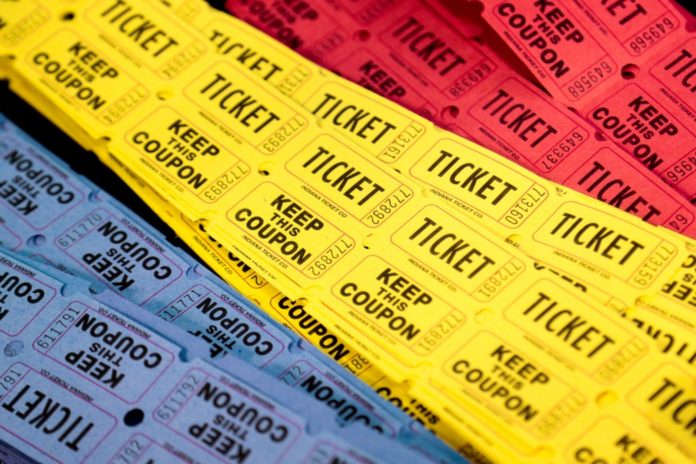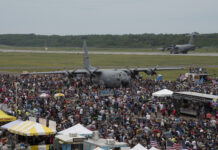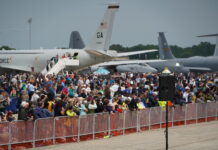Throughout my time with ICAS, I have argued that – with very few exceptions – air show ticket prices are lower than they should be. With the completion of this most recent research indicating that average prices in 2014 are $18.32, I’d like to make that case again.
First, let me say that decisions related to admission fees are necessarily specific to each location. They reflect everything from market conditions to the mission and purpose of the air show itself. As members have occasionally pointed out to me, there are a few shows that may actually be OVER-priced based on the entertainment value they deliver to spectators. And most event organizers recognize that there is little risk in leaving prices at or near historic levels.
Nonetheless, the evidence I’ve seen during my 16+ years with ICAS suggests that most shows would benefit from an increase in the price they charge for admission to their events.
- Relative to other spectator events, our prices are simply too low. At an average of $92.16, NASCAR ticket prices are five times higher than air shows. In air show cities, average amusement park admission fees are $41.52. The lowest-priced National Hockey League ticket in air show cities is $58.06, which is more than three times as expensive as air show prices in those same cities. Tickets to an upcoming Dave Matthews Band concert in Berkeley, California cost $75 with an additional $15 service charge. Concert tickets for Fleetwood Mac, a band that was last popular in the late 1970s and whose members average 68 years old, start at $70.
- For many people, price = value. True or not, many believe that a $15 event is better than a $10 event, and a $30 event is better than a $25 event. Our industry offers world-class entertainment featuring one-of-a-kind aircraft flown by talented pilots who risk their lives every time they perform. But, with an average ticket price of $18.32, what message are we sending to our prospective customers?
- Our demographics suggest that we raise ticket prices. Recently, I received a call from an editor at a market research publication. We had shared the results of several past ICAS spectator surveys with him. He was astonished at the results. “Air show audiences are among the most affluent in all of spectator sports,” he said. “You pull in a demographic that is more like tennis and golf than football and NASCAR. I had no idea!” And this situation has been the same since ICAS began tracking this information nearly 30 years ago. And yet, a one-day, adult ticket to a nothing-special PGA tournament this summer was $45…two and a half times our industry average. Put a slightly different way, we attract a predominantly high-end crowd, but set our prices at the opposite extreme.
- For cash-starved event organizers, there is no easier way to increase revenue. Most of the major decisions in our industry are based on the assumption that there is never enough money. With increased revenue, our events could introduce a wide range of important changes that would make them more entertaining, more attractive to prospective customers, and more sustainable.
- Without exception, I’ve never heard of a show that increased ticket prices and regretted it. And I discuss this issue with our members all the time. The most common concern is that overall revenue might decrease if a show increases its ticket price; in fact, in a 2008 survey of ICAS members, 58 percent of those surveyed indicated that this was the primary reason they would not increase prices. As an example, if a show attracts 10,000 people at $10 per ticket, it would have to attract more than 6,600 at $15 to make the same amount of money. And that dissuades some event organizers from considering a price increase. But, in practice, this is never a problem. In fact, I have yet to find a single air show that raised ticket prices and saw even a small decrease in overall attendance. Using the same example, not only have the shows gotten the 6,600 they needed to break even, they didn’t see a decrease from their historic figure of 10,000.
- In most communities, the air show comes just once a year. Unlike a Major League Baseball team which has 81 home games or a National Football League team that hosts eight games each season, the air show comes to town for just two days per year. And yet, both MLB and NFL ticket prices are more expensive than air shows.
- Our customers are practically asking us to increase the cost of admission. In each of the last several spectator surveys, we’ve asked two different questions that pertain directly to ticket prices.
In one, we ask spectators to tell us what areas of the air show could be improved. We offer 20 different multiple choice options, ranging from “more shade” and “traffic” to “easier access to water” and “ticket prices.” Given a specific opportunity to complain about ticket prices, less than one in ten (8.96%) have done so during the last ten years. “Ticket price” consistently falls behind availability of water and shade, concession prices and variety, lack of military performers, traffic and parking problems, time in lines, and directions to the venue.
We also ask a specific question about ticket price in our biennial spectator survey. When asked how they would describe the cost of the air show admission ticket, only 27 percent said it was expensive or very expensive.
- Modest price increases will not make air shows inaccessible to families. All but a very few of the tickets for an upcoming performance of the Ringling Brothers and Barnum & Bailey Circus, in Moline, Illinois, are more expensive – in most cases, significantly more expensive — than the average air show ticket price. Tickets for an upcoming performance of the Big Apple Circus near the ICAS headquarters in Virginia start at $25 and go up from there to as much as $70 and $80. As noted earlier, amusement park ticket prices in air show cities average $41.52. If family-oriented events like the circus and amusement parks are priced higher than our events, then there is room for the air show community to increase prices without making it difficult for families to attend.
Ticket pricing is a very emotional issue. And I know from talking to our members that decisions related to increasing prices are difficult. Ironically, one of the most compelling reasons for raising prices – our events are held for just two days once a year – is also a source of angst to event organizers concerned about the negative repercussions of a price increase that is not received well by spectators.
But the combination of factors suggesting that price increases are appropriate is too difficult to ignore. We are inexpensive in comparison to virtually all other spectator events. Our demographics suggest that we can charge much higher prices. Our industry needs the infusion of cash. Precedent and objective data suggest that price increases are not as risky as most event organizers believe they are. And modest increases would not make us unaffordable for the families that form the foundation of our spectator base.








